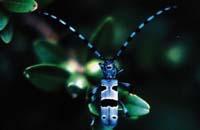Variants for animals
2006/01/01 Kortabitarte Egiguren, Irati - Elhuyar Zientzia Iturria: Elhuyar aldizkaria
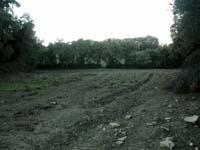
Scientists consider fragmentation processes of populations of natural and living habitats as the first factor of biodiversity loss in industrialized countries. Fortunately, little by little awareness of the need to maintain or restore the ecological connections of natural spaces is spreading. The aim of these connections is to allow genetic exchange between living beings and avoid isolation.
Ecological corridors aim to ensure physical contact between habitats and limit ecosystem fragmentation to facilitate the migration of plants and animals. In fact, fragmentation reduces the population of habitats and living things, among others. In addition, studies show that one-fifth of the world's largest natural reserves can have a totally different landscape within 30 years due to climate change and that this transformation of the place of residence can endanger certain species. From this point of view, ecological corridors can also be a solution.
What are ecological corridors?
The concept of corridor has been on the lips of many experts over the years, and in that confusion, often, its meaning and function has not been fixed. With the aim of solving it, Rosenberg clarified something in 1997 and defined that corridors are linear elements of the landscape that allow movement between habitats, but that do not have to be areas of reproduction of living beings. Therefore, not all the ecological requirements of the species life cycle can be met by the corridor.
In short, corridors allow the dispersion of living beings and genetic exchange. This same concept can be expressed in various ways: ecological corridors, green corridors, biological corridors, wildlife corridors, dispersion corridors, etc.
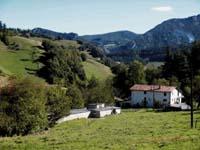
In addition, a single element of the landscape can act simultaneously as a corridor or as a barrier. That is, it can be a good ecological corridor for one species and at the same time become an insurmountable limit for another. Therefore, the territory should be organized taking into account the population of species and the habitats that are intended to be grouped.
Wild species generally use ecological corridors to search for food. Birds, for example, leave the nests and head to nearby habitats for breeding food at breeding time. Migratory species adapt to different locations throughout the annual cycle. These migratory movements are very variable, as they can migrate these species to both one kilometer and thousands of kilometers. Therefore, the areas of recreation and refuge are very important for these species.
Young wild species also leave the place of birth and disperse. Thus, among other things, endogamy is avoided. Colonization processes and genetic exchange are also favoured.
However, ecological corridors also present some disadvantages: on the one hand, they contribute to increase the dispersion of the species introduced by the human being -although it is true that some invasive species do not need ecological corridors, since their capacity for adaptation and colonization is enormous -; and on the other, ecological corridors can contribute to the extension of pests, parasites and diseases. This is the case of the American mink ( Mustela vison) and the American red crab ( Procambarus clarkii) when entering Europe.
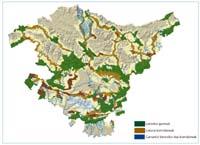
Technical service
Therefore, ecological corridors have their advantages and drawbacks, but current scientists consider their maintenance an indispensable task. And local studies must go ahead. In this sense, ICT (Agricultural Research and Technology) have designed a network of ecological corridors of the Autonomous Community of the Basque Country at the behest of the Basque Government.
First, it is necessary to know which habitats are in the ACBC affected by fragmentation and which of them can be associated through ecological corridors. These habitats are mainly characterized by having species very sensitive to fragmentation. A good combination of corridors is essential and whenever economic costs are minimal, better.
Once the design of the ecological corridors is completed, it is necessary to identify the critical points, road networks, etc. existing today in these ecological corridors as well as black areas. The functionality of these areas is of great uncertainty. These areas are called tensions.
By human steps
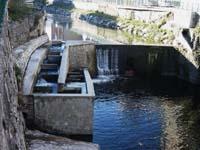
In CAPV voltage zones 168 steps, viaducts, tunnels and low and high crossings have been identified. It is necessary to preserve the structural, dimensional and environmental characteristics of all these steps. Depending on all this, the fauna will circulate to a lesser or greater extent. For example, for the passage of roe deer and wild boar on a lower crossing, it must have a minimum width of seven meters. The deer needs a minimum width of twelve meters. And so in every case.
Therefore, the existing steps in the highways must be the subject of a careful study and valuation of the species that will pass through them. In this way measures should be proposed for the improvement of several steps. The possibility of building new steps should also be studied. Unfortunately, orography does not help this work much. Something like this happens in the case of High Speed Train infrastructures. A good part of this infrastructure is that it has several tunnels in which at least less affects ecological corridors.
Roe deer and wild boars, for example, cause serious and dead accidents when crossing the infrastructure. Until you reach the A-68 you can say that in the area of Alava there are numerous roe deer. From the other side, this highway has noticeably slowed the expansion of the corzo to the east. And that is happening with the roe deer that penetrate the side of Navarre. The ability of the boar to cross these infrastructures is relatively small, even if it seems a lie.
Today, before the construction of any road, experts know that this road network must have several steps for wildlife, and design it carefully. However, previously it was not taken into account in the ACBC.
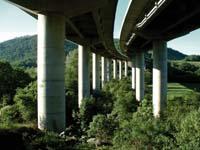
But roads are not the only areas that break the ecological corridors. In water, dams are also an obstacle to fish. And the problem can be mitigated by building appropriate scale scales or removing out-of-use infrastructures. In addition, several scales help fish climb the river. In the design of these scales we must take into account factors such as the behavior of the species, its size and its ability to jump. It is also essential that fish find the immediate entry of these scales.
In Gipuzkoa, for example, salmon ( Salmon salar) disappeared in 1870 on the Deba river, in 1938 on the Urola and in 1940 on the Urumea and Oria rivers. At present, the species is recolonizing these means. In fact, several dams have been eliminated and the water quality of the Gipuzkoa rivers has been significantly improved.
Therefore, although in today's industrialized society human beings are deteriorating the environment, it seems that the idea of revitalizing ecological corridors is spreading little by little and that the displacements of species will have continuity. the displacements of the species will have continuity.
